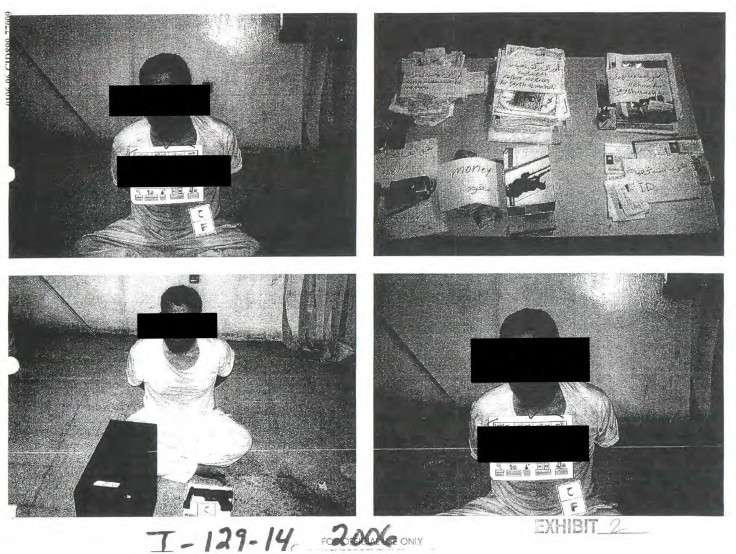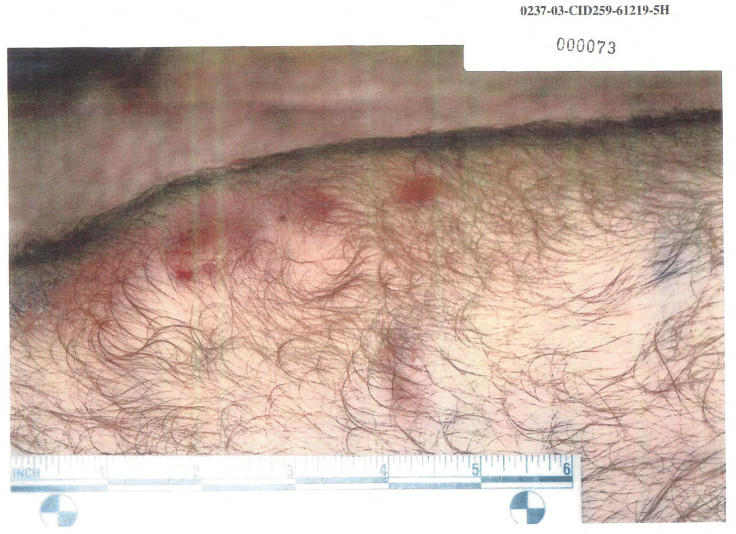Pentagon Releases Nearly 200 Photos Showing Detainee Abuse In Iraq, Afghanistan

The Pentagon on Friday released nearly 200 photographs related to its investigation of alleged abuse of detainees held by the U.S. military in Iraq and Afghanistan. The photos, many of which are close-ups of arms and feet showing bruises and scabs, were released in compliance with a Freedom of Information Act (FOIA) lawsuit filed by the American Civil Liberties Union (ACLU) in 2004.
Many of the photos were grainy, showing sections of the body where detainees alleged U.S. troops harmed them. Several images displayed detainees’ legs, backs, feet and occasionally their heads, but none of the photographs show the detainees’ unobscured faces.
Pentagon officials reportedly said the photos — part of a larger cache of 2,000 images — were taken by independent criminal investigators looking into 56 allegations of mistreatment and abuse in Iraq and Afghanistan from 2001 to 2009.
“Sixty-five service members received some form of disciplinary action,” the Pentagon said in a statement accompanying the photos, adding that of the 56 allegations of abuse and mistreatment of detainees, 14 were substantiated.

The ACLU, which filed its original FOIA request in 2003, hailed the release of the photos, but said the decision to hold back the remaining 1,800 images could “mislead the public about the true scope of what happened.”
“The disclosure of these photos is long overdue, but the photos released today are almost certainly the most innocuous of the 2,000 that were being withheld,” ACLU said in a statement released Friday. “From the nearly 6,000 reports, investigations, emails, and other documents the government has been forced to release to us in the course of this litigation, we have found more than 100 documents that either reference photos related to cases of abuse or actually contain photos that were redacted before they got to us.”
Since the ACLU first sought the release of the photos in the wake of an international outcry over torture by U.S. military forces at Iraq’s Abu Ghraib prison, the U.S. government has remained firm in its resistance to do so. In 2009, after the Justice Department agreed to release some of the photos, President Barack Obama blocked the move and ordered the photos to remain hidden, arguing that they would “further inflame anti-American opinion” and endanger U.S. troops stationed overseas.
Later that year, Congress passed the Protected National Security Documents Act to suppress any Bush-era photographs of detainees in military custody, unless the defense secretary could vouch that their release would not endanger Americans.
The ACLU finally won a breakthrough in 2014, when a federal judge in New York rejected the government’s desired blanket ban on the photos.
“To justify its withholdings, the government cites a general fear that exposing the misconduct of government personnel may incite others to violence against Americans and U.S. interests. The problem with this argument is that it gives terrorists the power to determine what Americans can know about their own government,” the ACLU said, in the statement. “No democracy has ever been strengthened by suppressing evidence of its own crimes.”
© Copyright IBTimes 2025. All rights reserved.






















